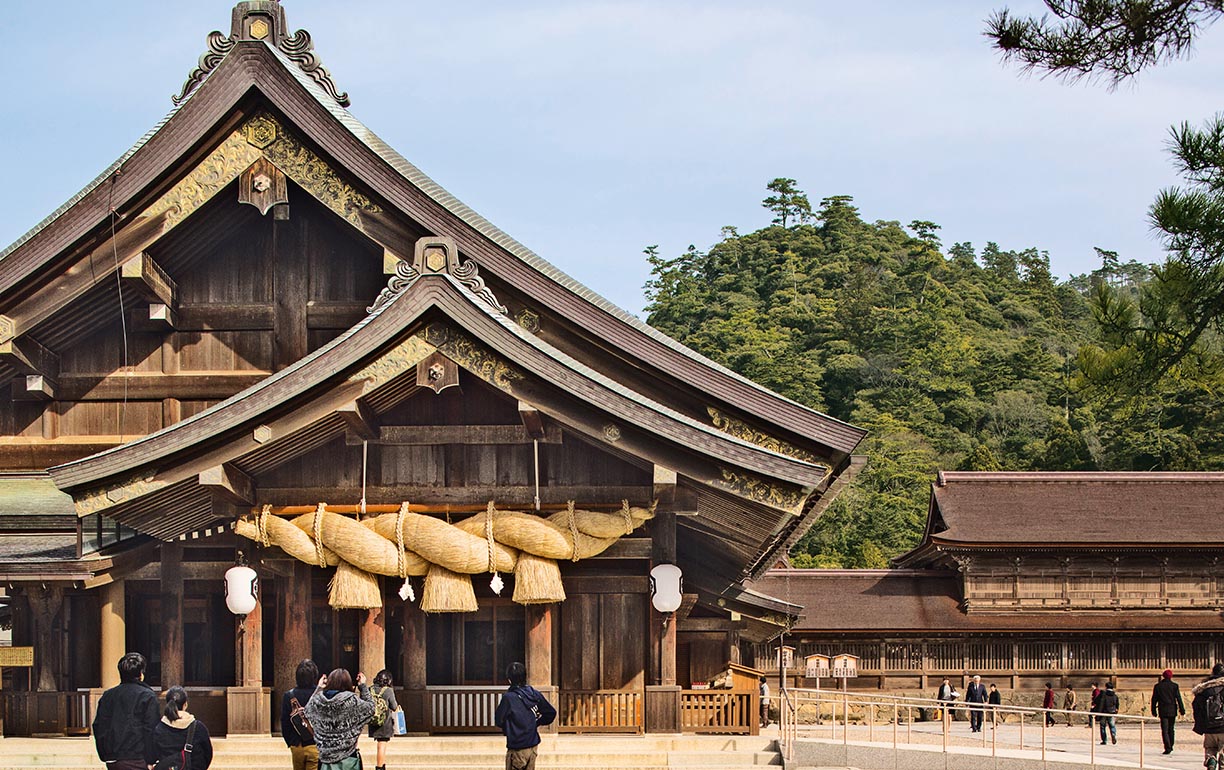
Technology transfer.
Fujitsu attaches great importance to origin: the manufacturer’s notebooks and tablets are still mainly produced in Japan. planet was given the opportunity to look behind the scenes in a Fujitsu factory and accompany a shipment – right through to its loading on board a Lufthansa Cargo freighter at Tokyo’s Narita Airport.
The prefecture of Shimane is the right place to go for anyone in Japan who wants to experience the maximum contrast to the megacity of Tokyo. The region in the far west of the main island of Honshu is one of Japan’s most sparsely populated regions. Small towns nestle against the wooded mountain ridges, and on the plains farmers grow rice. Restaurants serve sashimi from the fish nodoguro, particularly tender and freshly caught in the nearby Sea of Japan. The city of Izumo has two special places: one of the most important shrines in honor of Japan’s Shinto deities – and a Fujitsu production plant.

In the two-story building on a hill, the technology group employs around 1,200 people. They produce notebooks and tablets for the domestic market and for exports. A total of approximately two million in 2014. The mainboards for the devices are manufactured on the lower floor, while production takes place in a huge hall on the upper story.
Spotless linoleum floors mirror cool light. Twenty assembly lines that move with a gentle clatter are the heart of the production process. Quite a number of different products are manufactured on each line. Their sequence depends on the incoming orders. Fujitsu only produces devices for which orders have actually been received.
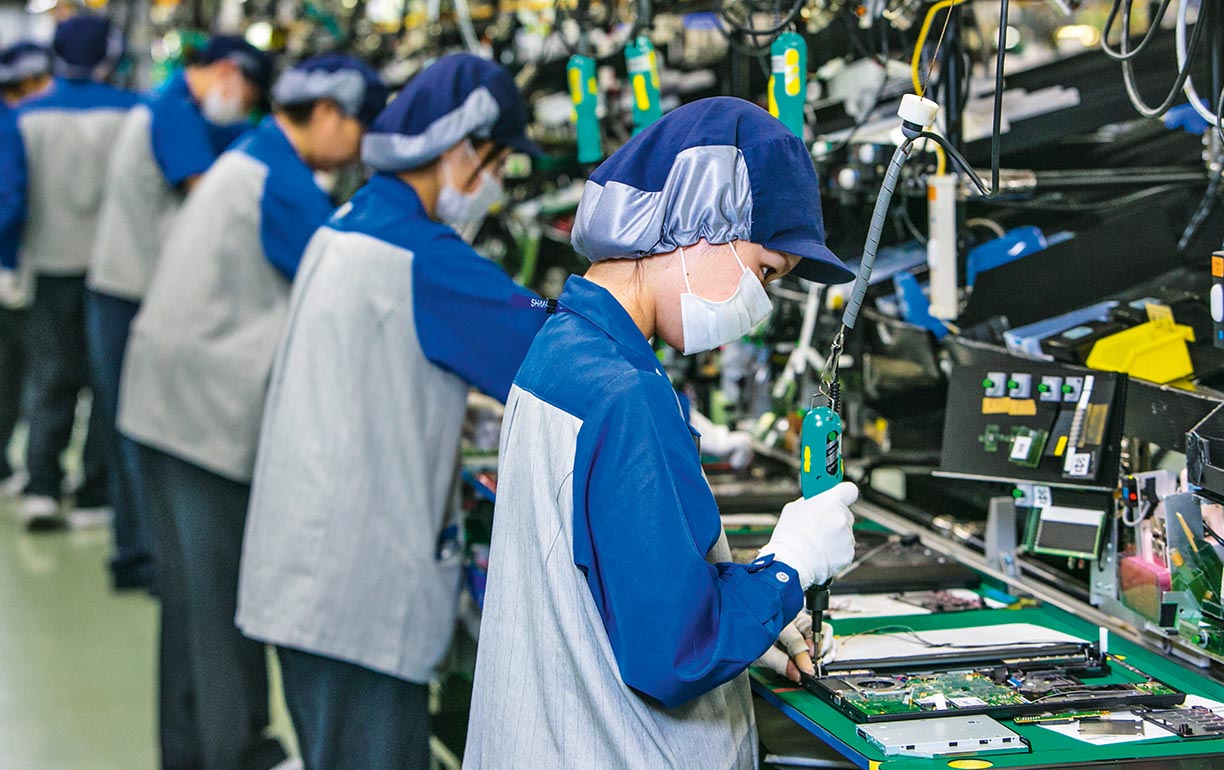
Production is geared to maximum efficiency.
No matter which model, they all pass through up to 18 stages on the assembly line. The first up to twelve stages constitute the production process proper. Manual work predominates during these stages. At position 1, for example, a worker wearing a bright gray jacket with blue shoulder pads, a face mask and slippers, the latter being worn by everyone here right up to the status of factory manager, swiftly pulls a protective foil off the underside of the casing.
He deposits it just as swiftly in a crate underneath the line. A few meters further along, parts are connected at several positions using electric screwdrivers – under the watchful eye of a colleague whose purple armband shows that she is a forewoman. A yellow-and-green arrow is emblazoned above one of the workers. In Japan this indicates that the respective person is an apprentice.
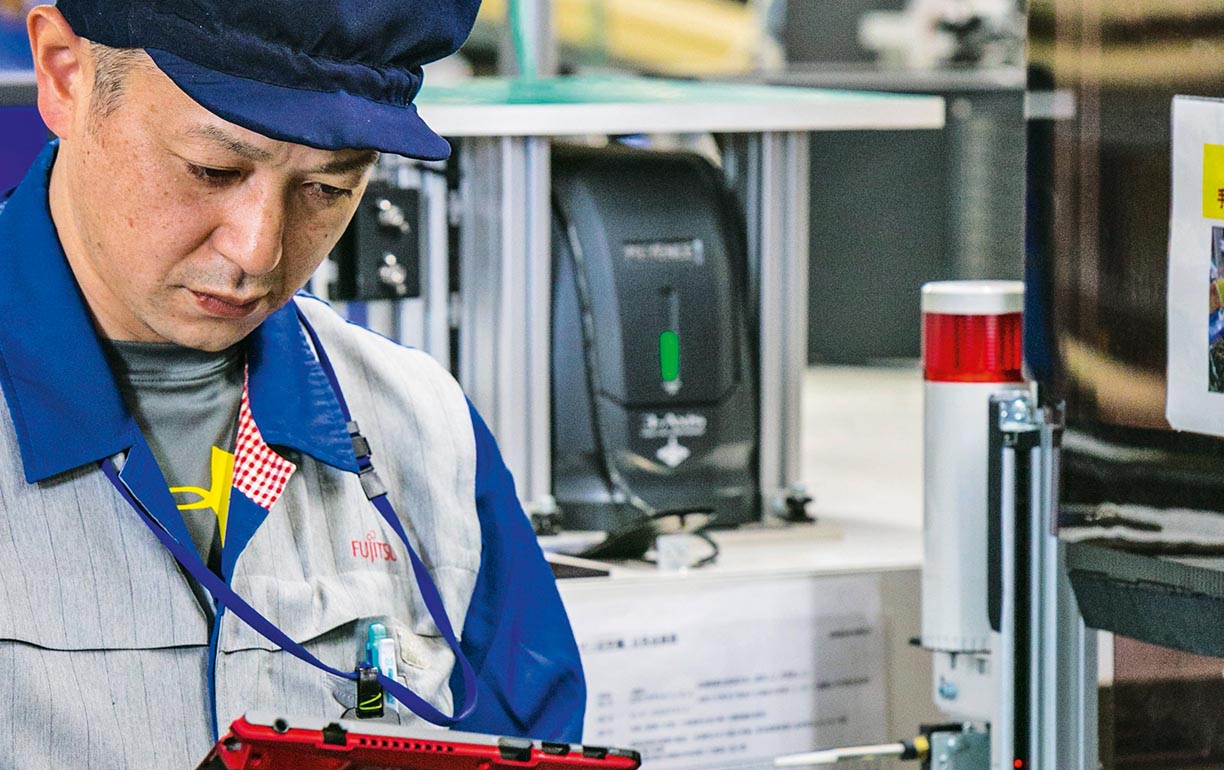
On the final third of the line, the work involves mostly automated checking and packaging. One of these positions consists of a black box with the label “Visual & Sound Tester”. The switched-on notebooks subsequently slide beneath an apparatus with small pins that tap on the keyboards. At the final stage, the devices, packaged in cardboard and labeled with barcodes, slide into a metal basket – to be picked up by a worker with a small trolley who takes the ready-for-dispatch products to the logistics area.
While all this is going on, other workers with handcarts rush to the rear side of the production line. There they provide all positions with the right amounts of components from the nearby picking zone – in a continuously recurrent loop of activity.
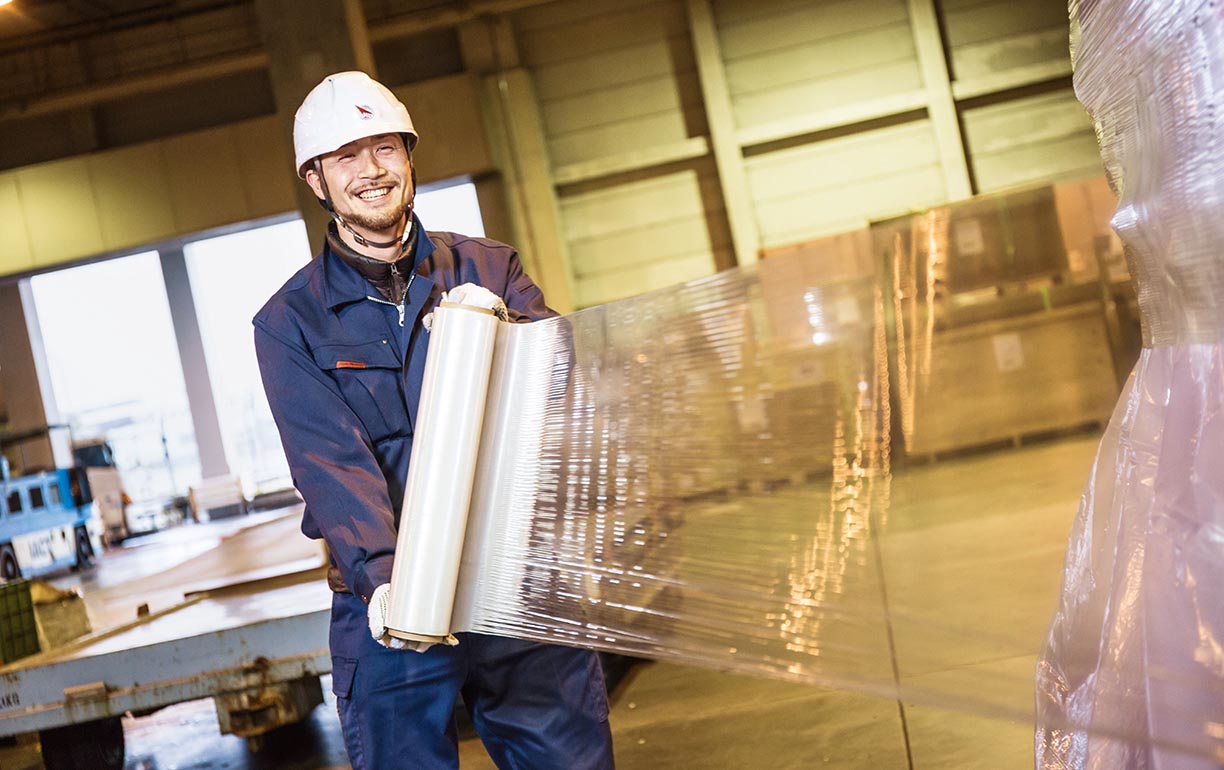
One of the plant’s distinctive features is also visible to visitors. It is the fact that manufacturing here is carried out with maximum efficiency. Every operation, no matter how small, is executed to perfection. One of the reasons is because the assembly line moves past the workers at an exactly defined speed. At the beginning of each line there is a monitor that shows all 18 positions – usually depicted as green rectangles. If there is any deviation in the process, the rectangle for the corresponding position first turns yellow before finally changing to red, accompanied by a melody that sounds like a computer game.
All this means that work at Shimane Fujitsu Limited, the official name of this location, is carried out in accordance with the principles of kaizen.
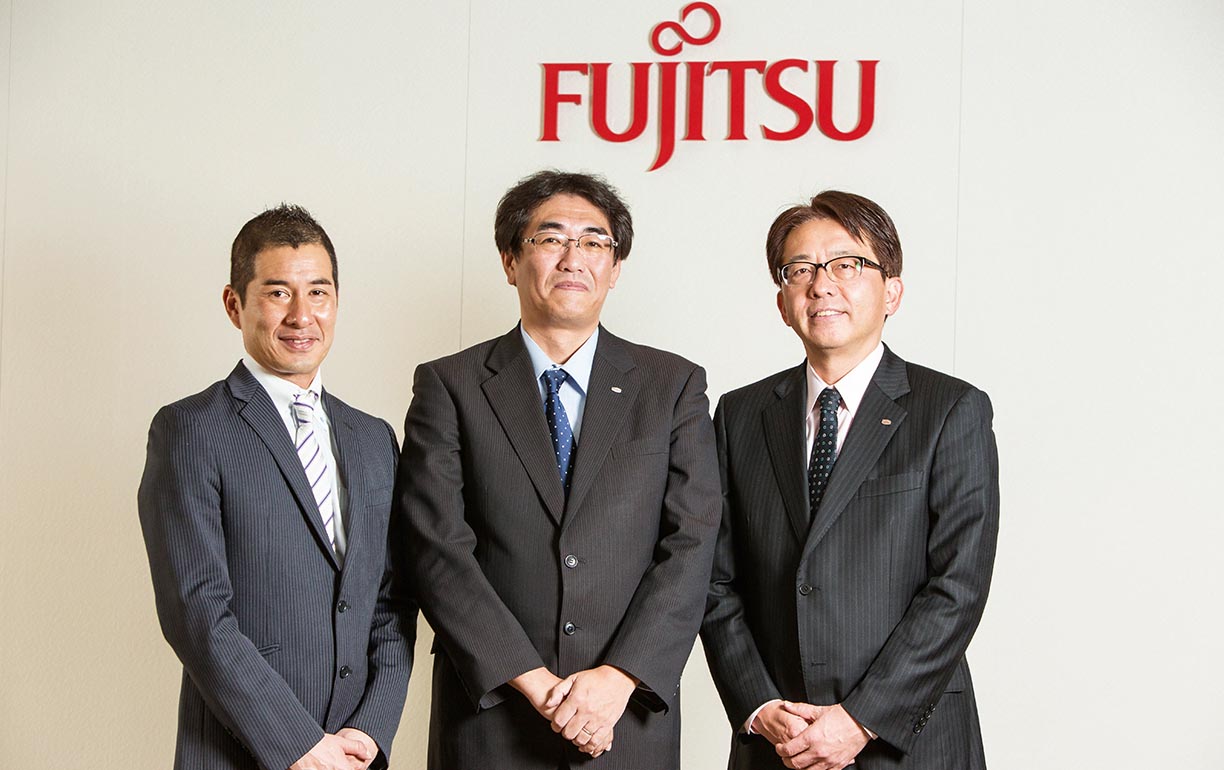
The plant’s other special feature is the fact that production is carried out here at all. The majority of the Japanese IT and electronics manufacturers have moved their production to China or to other Southeast Asian countries.
“We sell between 60 and 70 percent of our products in Japan, and about half of our customers here are companies,” says Susumu Nikawa, Senior Vice President, Personal Systems Business Unit. The desire for the greatest possible proximity to domestic buyers and quality considerations are the two factors that have induced Fujitsu to continue producing in Japan.
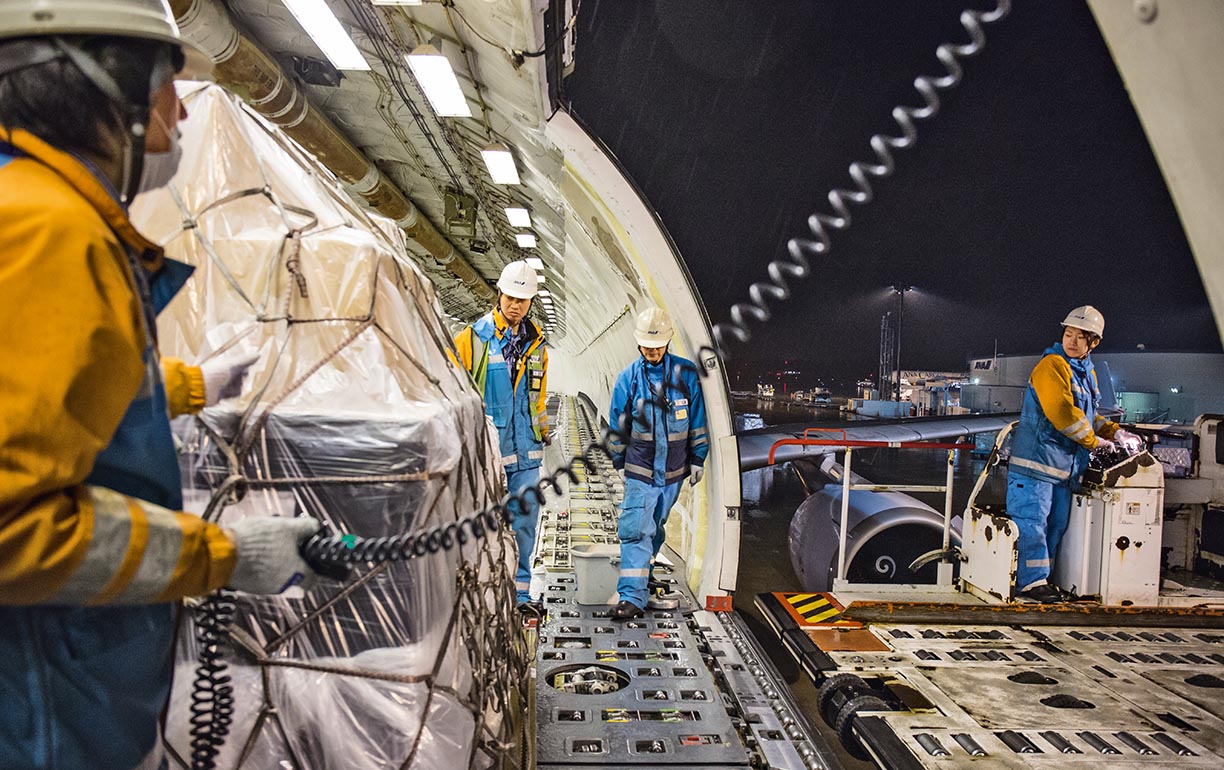
For exports Fujitsu mainly uses airfreight.
Masahiko Naito, Senior Vice President Supply Chain Management, Personal System Business Unit explains a third factor: “There are tremendous fluctuations in the demand for products like the ones we manufacture. Were we to produce them in China, we would need weeks every time to adjust the supply chains. Having our plants in Japan allows us to respond much faster.”
The group has a good dozen production and development locations nationwide. Up to 70 percent of Fujitsu products are “made in Japan.
”Fujitsu is a global player. The revenue generated in the fiscal year 2014 totaled approximately 36 billion euros. The group has more than 160,000 employees worldwide. In Germany alone, there are more than a dozen business locations, including what is currently the country’s only PC production plant in Augsburg. Products manufactured by Fujitsu reach customers in over 100 countries. The most important markets for exports from Japan are Germany and the USA, followed by Hong Kong, South Korea and Mexico.
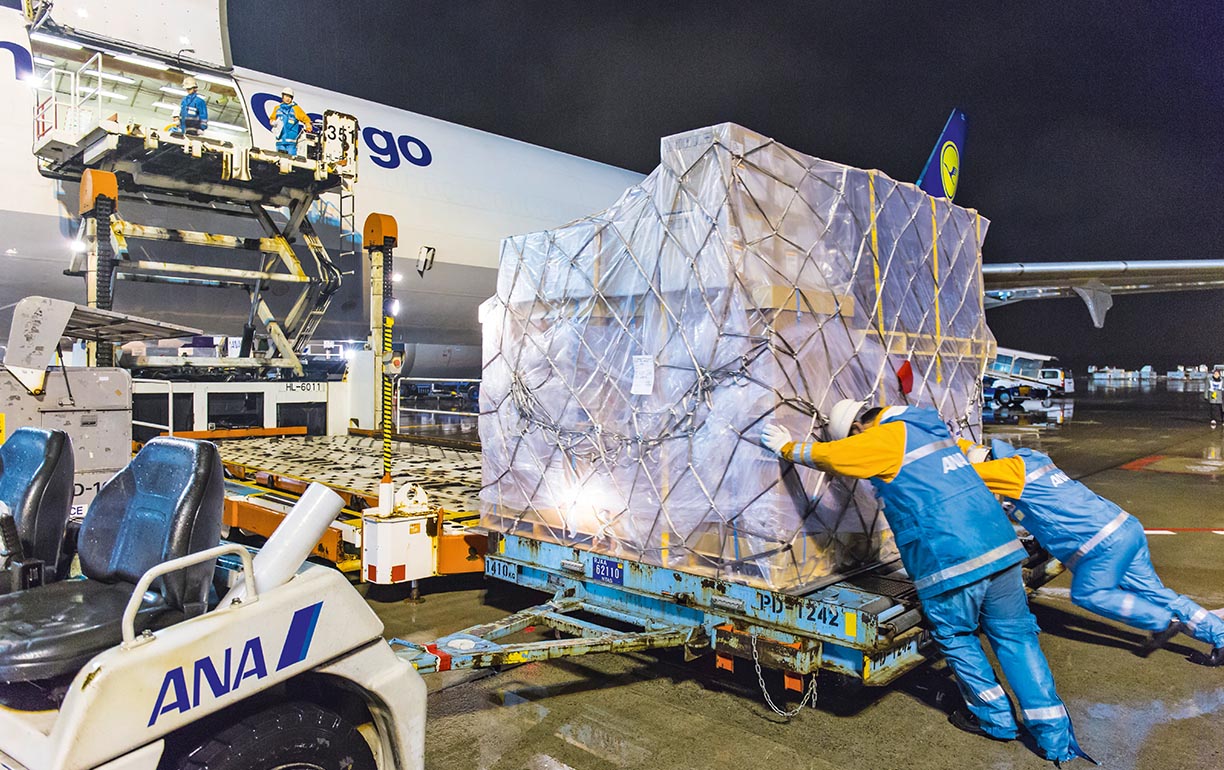
This is where airfreight, and thus Lufthansa Cargo comes into play. “We also only produce for exports after we have received the orders,” says Masahiko Naito. “Airfreight is therefore crucial for the shortest possible lead times.” For years, the share of products that Fujitsu exports from Japan in freighters and the bellies of passenger jets has been 90 percent and more. In the fiscal year 2013, Lufthansa Cargo transported goods weighing almost 2,000 tons for the technology group – mainly from Japan’s most important airfreight hub Tokyo-Narita to its German equivalent in Frankfurt.
“Although we have mainly indirect contacts, Fujitsu has always been one of our biggest customers,” says Hiroshi Sogo, Regional Manager Eastern Japan at Lufthansa Cargo. “And I assume that they trust in our services.” Services that have become even more comprehensive thanks to the cooperation with All Nippon Airways (ANA). “This joint venture allows us to offer even more flights from Tokyo. The customer benefits from this not only in terms of capacity but also with regard to flexibility.”
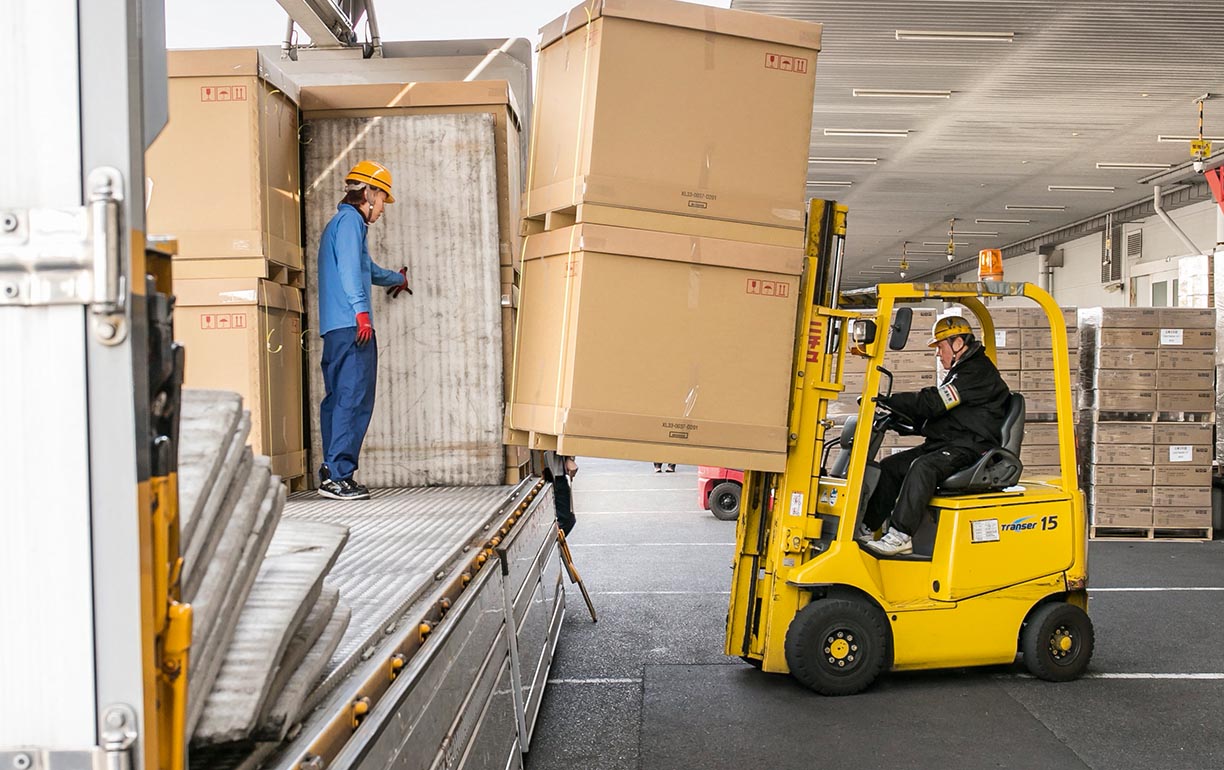
Exports from Izumo, first and foremost notebooks, reach Narita by road. The travel time required is estimated at two days. Today, a 12-ton truck is being loaded with ten neutral cardboard boxes. The six spaces that are still free will be filled by six boxes for the Japanese market, which the driver will drop off at a warehouse in Tokyo. On the way, he will pass the Osaka-Kobe-Kyoto metropolitan area and the megacity of Nagoya as well as Mount Fuji, which has been a Unesco World Heritage site since 2013.
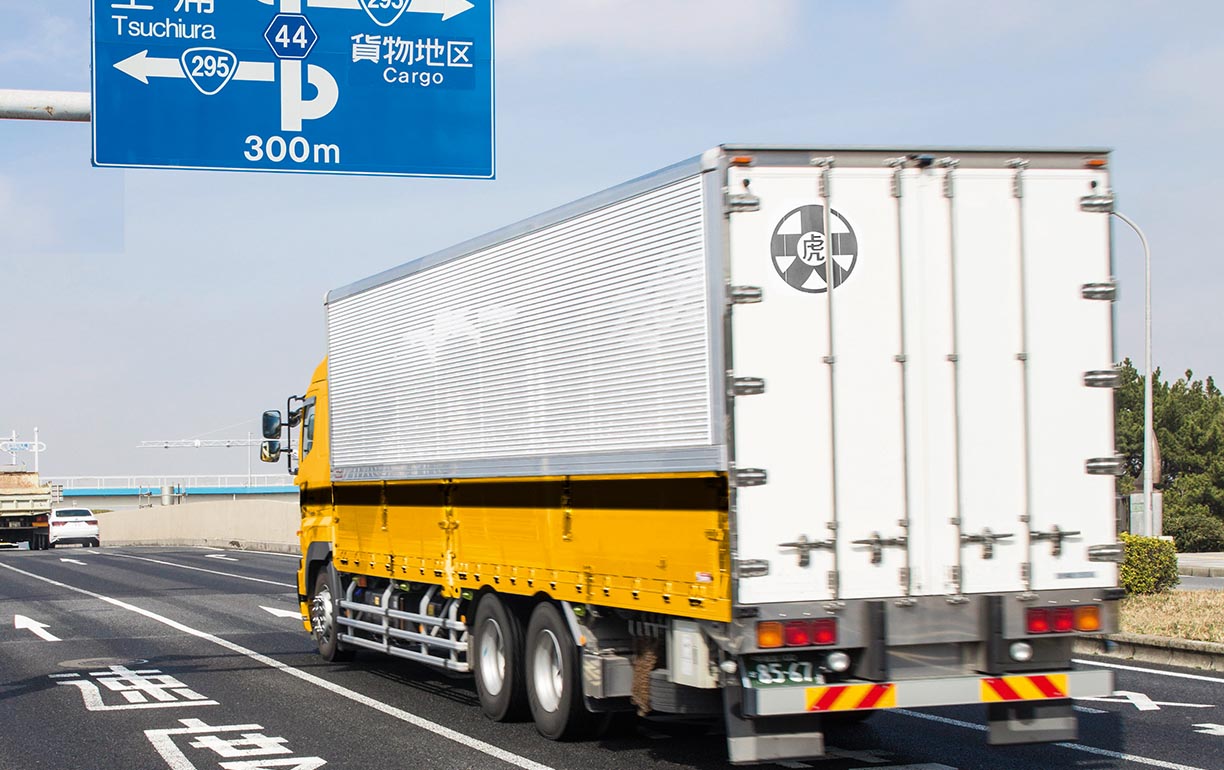
The trip to Narita International Airport, which is located 70 kilometers east of Tokyo’s city center, means around 850 kilometers of highway driving.Two days later, darkness has long since fallen as the MD-11F from Frankfurt taxis across the apron.
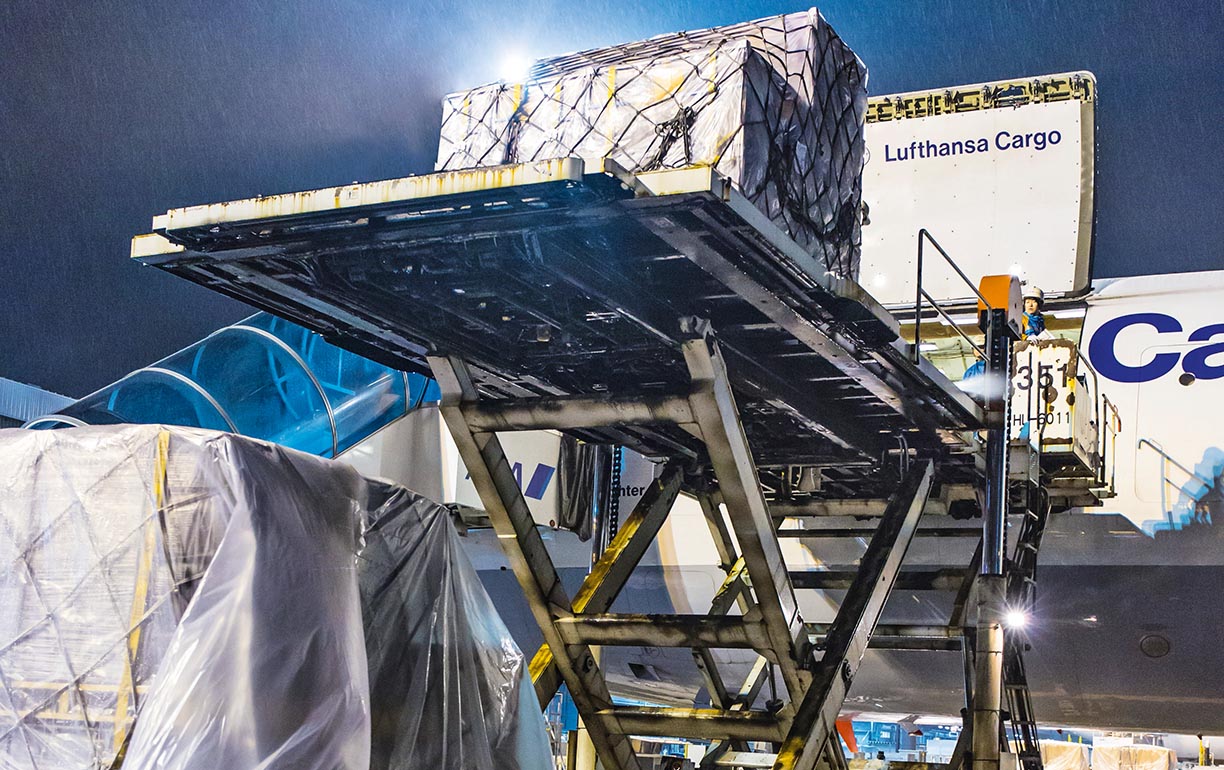
At 7 p.m. it comes to a halt at its allotted position. An icy wind blows drizzle over the area, which even huge lanterns can only illuminate in parts. The ANA handling crew immediately begins unloading the aircraft. In addition to lots of boxes and pallets, a black mid-range passenger car is pulled out of the upper cargo hold.
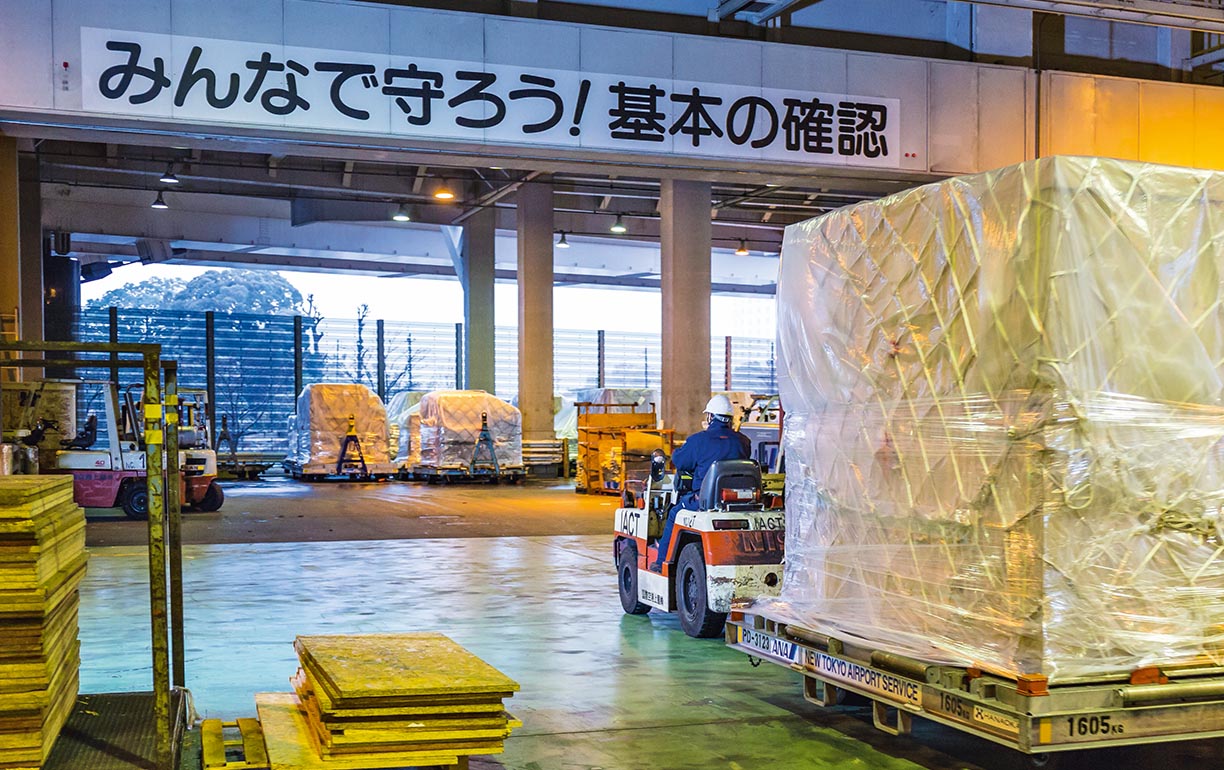
The cardboard boxes with the notebooks from Shimane are ready to be loaded, lashed securely in the nearby warehouse on airline pallets and protected against the rain by plastic sheets. It takes less than 2.5 hours to fully load the MD-11F. The crew is driven to the plane by bus. Take-off time is 9.40 p.m. – with notebooks from Fujitsu “made in Japan” on board.
Fujitsu – 80 years of quality.
The Fuji Tsushinki Manufacturing Corporation was founded on June 20, 1935, and already had 700 employees in its first year of business. It soon built up a reputation as “Fujitsu,” with the official renaming taking place in 1967. In 1942, the company began to manufacture telephones on a major scale. Twelve years later, Fujitsu launched Japan’s first computer, the FACOM 100. The model name FACOM for constantly further developed computers was used until the Eighties.
In 1999, Fujitsu entered into joint ventures with Hitachi (development, production and marketing of large-format plasma displays) and Siemens (European PC market). Fujitsu began offering “Green Business Solutions” in 2009 and today ranks as one of the environmental pioneers in the IT and telecommunications industry.
Photos:
Joshua Liebermann
Fujitsu – 80 years of quality.
| The Fuji Tsushinki Manufacturing Corporation was founded on June 20, 1935, and already had 700 employees in its first year of business. It soon built up a reputation as “Fujitsu,” with the official renaming taking place in 1967. In 1942, the company began to manufacture telephones on a major scale. Twelve years later, Fujitsu launched Japan’s first computer, the FACOM 100. The model name FACOM for constantly further developed computers was used until the Eighties. |
In 1999, Fujitsu entered into joint ventures with Hitachi (development, production and marketing of large-format plasma displays) and Siemens (European PC market). Fujitsu began offering “Green Business Solutions” in 2009 and today ranks as one of the environmental pioneers in the IT and telecommunications industry. |
Photos:
Joshua Liebermann
